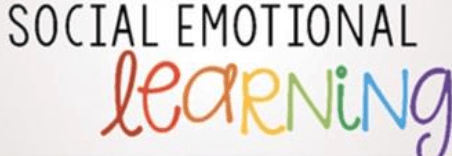Delve into the vital role of self-awareness in classrooms, enhancing students' emotional intelligence and overall school performance while empowering teachers through reflective practices.
Self-awareness in the classroom is an essential aspect of social emotional learning. You may have come across a lot of information regarding social emotional learning, or perhaps you are already implementing it in your classroom. There's a wealth of valuable information available about SEL! It's beneficial to familiarize yourself with the core concepts of this framework, as it is packed with practical insights.
In the upcoming posts, I will dissect social emotional learning (SEL) into manageable segments to explore the numerous benefits it provides. This series, consisting of five parts, will thoroughly examine each of the five CASEL competencies: self-awareness, self-management, social awareness, relationship skills, and responsible decision making.
The first topic in this series is Self-Awareness. Let’s explore what this initial competency entails! CASEL, which stands for the Collaborative for Academic Social and Emotional Learning, serves as a fundamental element of social-emotional learning. They developed the SEL framework, which consists of 5 essential competencies, beginning with self-awareness.
What Does Self-Awareness Mean?
What exactly is self-awareness? CASEL describes it as “The ability to comprehend one’s own emotions, thoughts, and values, as well as how they affect behavior in various situations.” (1)
In other words, this competency focuses on the process of getting to know ourselves, which encompasses aspects such as our identity, preferences and aversions, strengths and weaknesses, emotions and opinions, as well as the ways in which our thoughts impact our feelings, words, and actions.
Why is it essential to educate students on recognizing these aspects within themselves? There are numerous reasons that we will explore in this post.
Why is Self-Awareness Important?
Social-emotional learning focuses on building skills that enable students to regulate their emotions and behaviors while fostering connections with others. To achieve this effectively, it's essential to understand your inner self and what drives your actions.
Consider this! Can you set goals for yourself if you don't recognize your aspirations? How can you discover ways to soothe yourself if you're unaware of what disturbs you? Are you able to communicate something you'd like to do with a friend if you don't know your own preferences?
A lot of students struggle to express these concepts on their own unless they are taught to do so. Social Emotional Learning (SEL) equips children with the tools to comprehend the workings of their minds and the reasons behind their actions. When students gain self-awareness, they will be capable of performing tasks such as:
And much more. These are lifelong skills that children will carry with them into adulthood. Assisting students in learning to connect with themselves prepares them for success in school and in life.
Advantages in the Classroom
If social-emotional learning (SEL) and self-awareness contribute to students' success in school, it stands to reason that classrooms can also gain from these aspects. The knowledge of oneself not only aids individuals but also allows others to benefit from someone else's self-awareness. This is highly advantageous for classroom environments!
Studies have shown that students who completed a social-emotional learning (SEL) program in school exhibited better classroom behavior, enhanced skills in managing stress and depression, as well as more positive attitudes towards themselves, their peers, and the school environment.
This is completely logical. As children develop their own understanding and learn to manage themselves, they gain confidence in their abilities. Students become more proficient at using communication tools with others. This leads to improvements in student behaviors, attitudes, and relationships!
Envision a group of children gathered in a room who are unable to express their emotions. They often act without considering the consequences of their actions or may respond impulsively. Some may resort to conflicts to assert their desires, utter harmful words, or disrupt their peers.
With the introduction of SEL and self-awareness lessons, students undergo a transformation. They start discovering new methods to express their needs. They become adept at identifying when they are not in control and learn how to address those feelings. Additionally, they grasp the importance of sharing and taking turns as they become conscious of the impact their actions have on others.
When students become attuned to their own feelings and needs, they also connect better with their classmates, leading to a more supportive and unified classroom environment.
Self-Awareness for Educators
Self-awareness is not only important for students, but it is also a significant area for growth for teachers! Educators can leverage their self-awareness for personal self-care and to enhance their skills in teaching social-emotional learning (SEL) and engaging with their students.
Ways Teachers Can Cultivate Self-Awareness
Educators who cultivate their own self-awareness can significantly enhance their teaching methods and classroom environment. What does it mean for teachers to be self-aware? Paying attention to your own thoughts and feelings can help you identify or clarify the following aspects:
Additionally, there is so much more to consider. The key point is that by taking the time to connect with what inspires and motivates you, you will be able to progress and develop both as an educator and as a person. Both you and your students can gain substantial advantages from your self-awareness!
Explore this topic further to learn more about how SEL benefits teachers!
Instructing on Self-Awareness
So, what are the methods for teaching self-awareness to your students? Continue reading! The remainder of this article will provide strategies and lesson suggestions.
The initial step in teaching self-awareness is to ensure that students understand its meaning and its significance for achieving success in the classroom. This can be accomplished by incorporating the term "self-awareness" into the vocabulary and culture of the classroom. It is important to frequently discuss self-awareness!
Incorporate self-awareness check-ins with your students. This can be done through simple reflective questions posed during class discussions or in one-on-one conversations. Ask questions such as, "How am I feeling?" "What am I thinking?" and "What do I need?" This approach allows students the opportunity to pause and reflect on their thoughts and emotions.
To develop self-awareness, students must learn to reflect on their own emotions, thoughts, and actions. Highlighting behaviors in real-time can be effective, such as asking, “I notice your classmate is attempting to speak and got interrupted; how did your behavior impact her?” or “I see you’re struggling to concentrate right now. How does your body feel, and what do you require?” These brief self-awareness discussions encourage students to engage their minds and explore their inner selves.
If you are seeking inspiration for specific activities that can assist you in implementing these self-awareness strategies, take a look at the following ideas.
"I Wonder" Activity to Encourage Self-Awareness and Routine Check-Ins:
This is an easy activity that requires minimal effort and can be utilized throughout the day. You can begin the day by posing an “I wonder” question during a morning meeting. As the children settle into their seats, simply ask, “I wonder how we are feeling this morning. Let’s take a moment to check in with ourselves. I wonder about our energy levels. Or, I wonder how we feel physically. I wonder how our minds are functioning or how we are feeling emotionally today.”
Pause after each "I wonder" statement. You can allow students to keep their thoughts to themselves, or they can share their feelings by giving a thumbs up or thumbs down.
Following this, you can also incorporate "I wonder" questions after different activities, such as transitioning from lunch to the afternoon, after a test, or once a challenging task has been completed.
Incorporating simple check-ins throughout the day encourages self-awareness as it allows students the opportunity to pause and reflect on their internal experiences.
Ways to Enhance Self-Awareness Through Mindfulness or Guided Imagery Exercises:
Meditation serves as an excellent method to take a break and explore basic self-awareness techniques. Often referred to as mindfulness or guided imagery, this practice enables students to settle down, unwind, and engage in introspective thoughts that assist them in recognizing their inner experiences.
Mindfulness can help individuals become aware of their physical sensations and combine this awareness with breathing techniques to navigate different situations. For instance, it may involve questions like, “How does your body feel? Is your heart pounding? Are your hands feeling clammy? Take a moment to slow down and relax by inhaling for 3 seconds and then exhaling for 3 seconds…”
Another form of meditation involves posing a series of questions that prompt students to evaluate their feelings while they breathe, followed by a discussion on the steps they can take to reflect on various aspects. For instance, it could go like this: “Let’s center ourselves in this moment by becoming aware of our surroundings… Start by focusing on what you hear… Then shift your attention to what you can touch… Finally, concentrate on the scents around you…”
Guided imagery creates a scenario where children envision themselves as an object and engage in activities related to that object to foster self-awareness. For instance, it might go like this: “Imagine you’re a magnificent flower in full bloom. You’re standing tall, your colors are vibrant, and you are thriving. How would you appear when you're feeling exhausted? Are you like a flower that requires water? Are your petals starting to droop? Do you feel like wilted?”
Using Journaling to Enhance Self-Awareness Skills:
Journaling serves as an excellent tool to encourage children to think and engage with the concept of self-awareness. Maintaining a journal provides them with a means to express the concepts they have learned in their own words. This personal expression fosters significant connections to self-awareness.
Students may keep a standard notebook for journaling, or they might use a journal titled "I feel when" or "my feelings journal," where they can express their emotions, reflect on what triggers those feelings, and explore ways to process their emotions effectively.
Students can also engage in unconventional journaling activities. For instance, they can listen to various genres of music and reflect on their observations and the feelings or thoughts those songs evoke. Journals are not limited to just writing; students can also produce drawings or posters based on a self-awareness skill they have learned. These visuals can be displayed in the classroom to serve as reminders for applying that skill in the future.
Think about incorporating mindfulness into your classroom! It complements social-emotional learning beautifully and serves as an excellent resource for promoting calm and relaxation during a hectic school day. By implementing these best practices, your students will enjoy a meaningful mindfulness experience.
Looking for Resources on Self-Awareness for Your Classroom?
My social emotional learning curriculum clearly instructs students on the concept of self-awareness and offers practical opportunities to engage with various aspects of self-awareness.
These lessons are also included in my FULL YEAR curriculum, which offers the best value:




